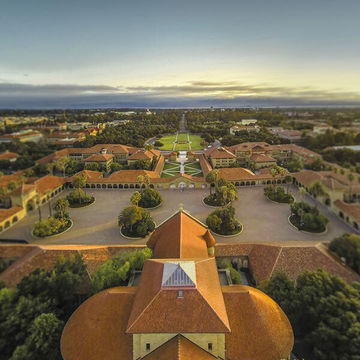APPLIED PHYSICS/PHYSICS COLLOQUIUM: Alex Lupsasca, Vanderbilt University, and Pamela Davis Kivelson, Q-FARM Artist in Residence
Department of Physics
370 Jane Stanford Way, Stanford, CA 94305
200

APPLIED PHYSICS/PHYSICS COLLOQUIUM
Tuesday, October 11, 2022
3:30 p.m. on campus in Hewlett Teaching Center, Rm. 200
Light refreshments served in Varian lobby at 3:15 p.m.
Please wear face coverings and practice social distancing
Alex Lupsasca
“The Black Hole Photon Ring”
What does a black hole look like? The first images of the supermassive black hole M87* display a bright ring encircling the event horizon, which appears as a dark patch in its surrounding emission. But Einstein's theory of general relativity predicts that within this image there also lies a thin "photon ring" consisting of multiple mirror images of the main emission. These images arise from photons that orbited around the black hole multiple times, probing the warped space-time geometry just outside its horizon. The photon ring carries an imprint of the strong gravity in this region and encodes fundamental properties of the black hole. A measurement of this predicted (but not yet observed) ring could provide a precise test of general relativity and will be the target of a NASA mission proposed to fly within the next decade.
Pamela Davis Kivelson
“The Art of Black Holes”
A black hole distorts, stretches, and tears apart matter in its neighborhood even stars. The underlying mechanism is the strong tidal forces exerted by the gravitational field of the black hole . Using Pamela Davis Kivelson’s art as input Professor Baio Lian ( Princeton) and Research scientist Ruizhu Chen ( Stanford ) calculated the paths of light rays from these works as they encounter a black hole and thereby creating images of the ways in which photographs, and paintings of astronomical size would get transformed, lose information, break apart, and disintegrate in the vicinity of a black hole. Davis Kivelson will discuss the iterative transformative creative process that brought the Art of Black Holes to life.